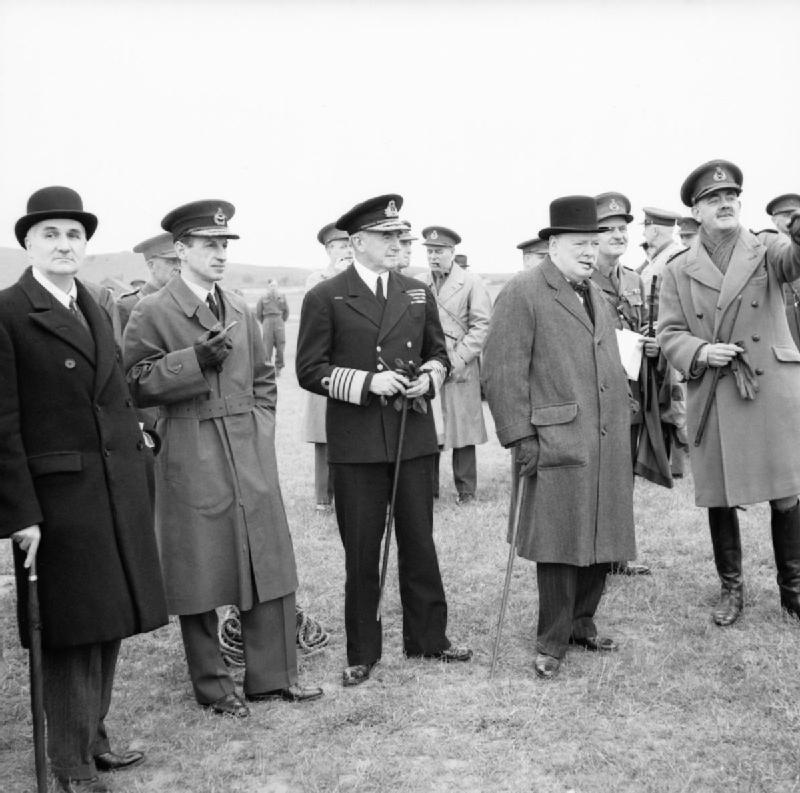
From left to right: The Rt Hon Frederick A. Lindemann, Lord Cherwell, Air Chf Mshl Sir Charles F. A. Portal (CAS), Adm of the Fleet Sir A. Dudley P. R. Pound (1SL/CNS), and PM the Rt Hon Winston L. Spencer-Churchill.
I believe that his document is kept with the papers of:
Frederick Alexander Lindemann, CH, FRS Viscount Cherwell of Oxford (CSAC 80.4.81/F.226), Cambridge South Asia Collection, Nuffield College Library, University of Oxford, United Kingdom.
Lord Cherwell’s dehousing paper is take from:
Sir Max Hastings. Bomber Command: The Myths and Reality of the Strategic Bombing Offensive, 1939-1945 (New York, NY: Dial Press/James Wade, 1979) 140-141.
Pictures shown are purely for educational purposes and no permission has been sought. If any mistakes are found, please let me know by contacting me here.
The following seems a simple method of estimating what we could do by bombing Germany.
Careful analysis of the effects of raids on Birmingham, Hull and elsewhere have shown that, on the average, one ton of bombs dropped on a built up area demolishes 20-40 dwellings and turns 100-200 people out of house and home.
We know from our experience that we can count on nearly 14 operational sorties per bomber produced. The average lift of the bombers we are going to produce over the next fifteen months will about three tons. It follows that each of these bombers will in its lifetime drop about forty tons of bombs. If these are dropped on built-up areas they will make 4,000-8,000 people homeless.
In 1938 over 22 million Germans lived in fifty-eight towns of over 100,000 inhabitants, which, with modern equipment, should be easy to find and hit. Our forecast output of heavy bombers (including Wellingtons) between now and the middle of 1943 is about 10,000. If even half the total load of 10,000 bombers were dropped on the built-up areas of these fifty-eight German towns the great majority of their inhabitants (about one-third of the German population) would be turned out of house and home.
Investigation seems to show that having one’s house demolished is most damaging to morale. People seem to mind it more than having their friends or even relatives killed. At Hull signs of strain were evident, though only one-tenth of the houses were demolished. On the above figures we should be able to do ten times as much harm to each of the fifty-eight principal German towns. There seems little doubt that this would break the spirit of the people.
Our calculation assumes, of course, that we really get one-half of our bombs into built-up areas. On the other hand, no account is taken of the large promised American production (6,000 heavy bombers in the period in question). Nor has regard been paid to the inevitable damage to factories, communications, etc., in these towns and the damaged by fire, probably accentuated by breakdown of public services.
